“In all toil there is profit, but mere talk tends only to poverty.”
Proverbs 14:23 (ESV)
“It won’t do to hold too many meetings and write lengthy articles. Shenzhen’s rapid development was the result of doing solid work, not the outcome of delivering speeches or writing articles.”
Deng Xiaoping
Discover the purpose of your work and your corporation
What is your purpose in work?
- You can transform Borneo into the new manufacturing hub in the Asia Pacific.
- Your investment will provide new job opportunities and lift the social and economic standards in the region.
What drives your corporation’s core value?
- Spearheading a pioneering investment and business hub in the Asia Pacific.
- Expanding your company’s portfolio and forging new market opportunities within the region.
The mission will align your corporation’s vision and define a noble purpose for your work.
Pudong Shanghai Transformation – Then and Now
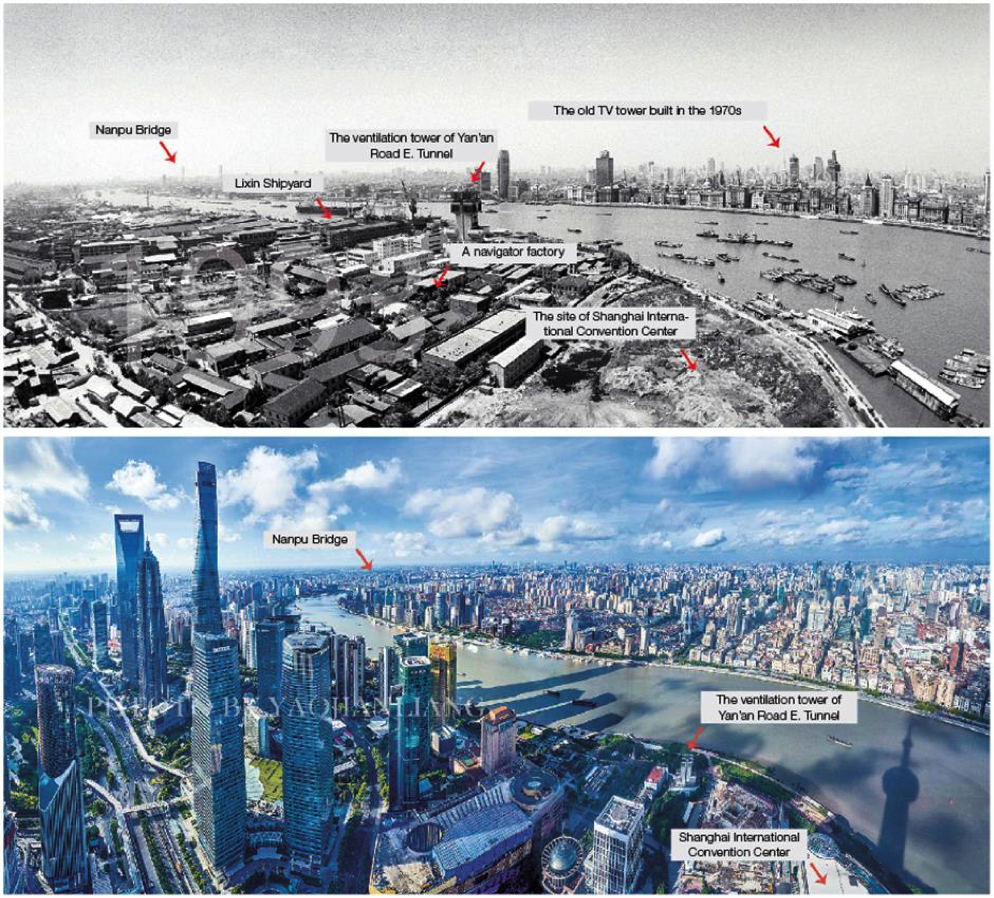
1.0 Executive Summary
Mission:
The mission is to establish strategic alliances with government agencies, foreign investors, top international Special Economic Zone (SEZ) operators, and local developers. We aim to invest in six SEZs, each spanning 4,000 hectares, with an initial stage comprising 1,000 hectares for each SEZ.
Key Management Team:
- Mentors: Visionary pioneers and industry leaders with an extensive global network who provide invaluable guidance and inspiration.
- Coaches: Mission-oriented industry experts offering practical solutions to challenges, ensuring our team remains focused on its objectives.
- Partners:
- A project leadership group boasting a successful track record in SEZ development, operational management, and global marketing exposure.
- A reputable investment manager with access to funding sources within the Asia Pacific SEZ industry.
- Government agencies offering business and financial incentives.
- A credible local industrial park developer with procurement capabilities, a strong local network, sound financial standing, and robust government support.
Product Benefits:
The SEZ initiative aims to foster economic growth, increase foreign investment, create employment opportunities, raise living standards, and enhance social conditions in Borneo nations. Additionally, SEZs will promote duty exemptions, tax holidays, and business concessions, while investors will benefit from lower land costs, long-term stability, reliable returns, and protection against inflation.
Target Market:
The target customers include global multinational corporations (MNCs) operating in industries such as manufacturing, oil and gas, agriculture, high tech, logistics, mining, pharmaceuticals, electronics, and food.
Financial Projections:
- Investment: $12.0 billion for six SEZs
- Cost: $12.0 billion for six SEZs
- Revenue: $15.6 billion from six SEZs
- Income: $3.6 billion from six SEZs
- Payback Period: 10-15 years, including planning and achieving 100% occupancy.

Unique Business Model:
- A team with a successful track record in the global SEZ industry.
- Abundant resources in Borneo, including competitively priced land, a skilled labour force, and a welcoming government for foreign investment.
- A focus on a specific segment of the SEZ market, leveraging unique attributes.
- Strategic alignment of goals with partners contributing expertise in SEZ development, operation, finance, and management.
- Integration of SEZs, hinterland development, and global investors.
- A central hub location in the Asia Pacific region.
2.0 Mission
2.1 Problem
- Conflict: Geopolitical tensions, trade disputes, and high tariffs are adversely impacting the profit margins of manufacturers operating in existing hubs.
- Cost: Businesses producing goods are continually seeking more cost-effective production centres.
2.2 Solution
- New Opportunities: The establishment of new Special Economic Zones (SEZs) will provide businesses with investment prospects, job creation opportunities, and enticing financial incentives.
- Borneo Advantage: Setting up SEZs in Borneo offers a multitude of advantages, including political stability, vast expanses of land, a readily available labor force, maritime logistic infrastructure, and competitive manufacturing costs.
2.3 Mission
- Entity: Our mission is to forge strategic alliances with government agencies, foreign investors, top international SEZ operators, and local developers.
- SEZ Development: In the initial phase, we will invest in six special economic zones, each spanning 4,000 hectares, with the first stage consisting of 1,000 hectares for each SEZ.
Proposed six new SEZs next to the seaports

3.0 Product
3.1 Product Description
- SEZs: Our six new Special Economic Zones represent exclusive manufacturing areas characterized by efficient administration, attractive financial incentives, and supported by high-quality services, a skilled labour force, and robust infrastructure.
- Specialisation: Each of these six SEZs is designed with a unique and dedicated function, optimizing their effectiveness.
Example of SEZ with a dedicated function
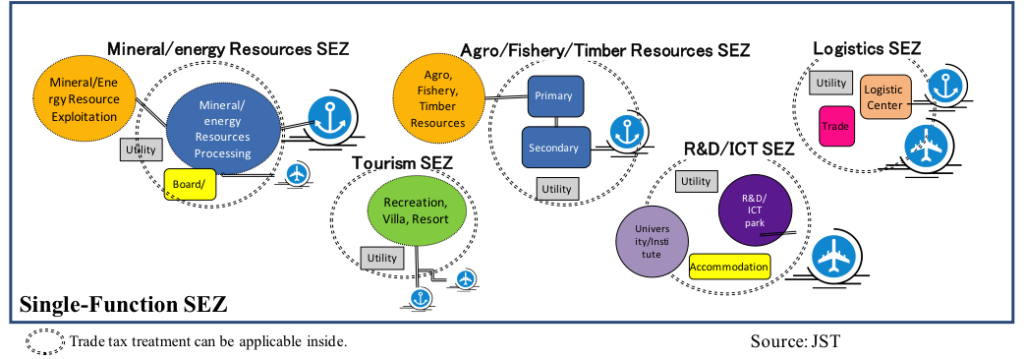
3.2 Product Attributes
- Tax Incentives: Special tax benefits are extended to foreign direct investments within the dedicated zones, enhancing their attractiveness.
- Government Support: Comprehensive economic, financial, and administrative support aligns with government policies governing manufacturing, trading, and operational activities.
- Incentives: Our SEZs offer exemptions from customs duties and tariffs, flexible arrangements regarding land, permits, licenses, employment, and administrative processes.
- Infrastructure Services: Modern infrastructure services are provided to facilitate business operations.
Product attributes that will attract investors

3.3 Product Benefits
- Fostering Growth: The SEZs play a pivotal role in stimulating economic growth, attracting increased foreign investment, generating employment opportunities, elevating living standards, and enhancing social conditions in the Borneo region.
- Incentivizing Investment: Our SEZs promote duty exemptions, tax holidays, and business concessions, making them highly appealing to investors.
- Cost Efficiency: Investors stand to benefit from reduced land, labour, and energy costs within these SEZs.
Product benefits to investors in the SEZ
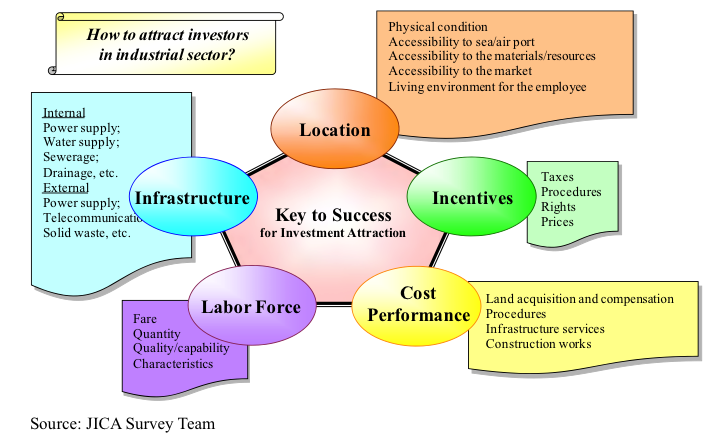
3.4 Product Competitive Advantages
- Cost Efficiency: Our Special Economic Zones (SEZs) offer a distinct competitive edge with lower costs attributed to duty exemptions, tax benefits, access to vast land resources, and highly competitive labour rates.
- Strategic Location: Positioned strategically within the Asia Pacific region, our SEZs provide businesses with an advantageous gateway to international markets, facilitating efficient trade and market access.
- Abundant Resources: The Borneo region’s wealth of natural resources in mining and agriculture, coupled with a substantial labour force, extensive coastal lines, and a warm, humid climate, presents an attractive proposition for businesses looking to capitalize on resource availability and operational conditions.
4.0 Market
4.1 Market Segments
Specialty:
- Brunei: Targeting the oil and gas sector with a focus on downstream industries.
- Sandakan: Concentrating on agriculture and aquaculture.
- Lahad Datu: Positioning as a maritime logistics hub serving the Asia Pacific.
- Balikpapan: Specializing in pharmaceutical and high-tech manufacturing.
- Banjarmasin: Geared towards mining and industrial activities.
- Kijing: Focusing on agriculture and manufacturing.
4.2 Target Market Strategy
- Specialisation: Allocate dedicated industrial zones within the SEZs for import, manufacturing, and export production, offering maximum policy flexibility.
- Service: Provide high-quality infrastructure, fiscal incentives, regulatory concessions, and business-support facilities at competitive costs to attract investors.
- Location: Strategically position SEZs near seaports, airports, railway stations, borders, and hinterland logistics centres for convenient transportation and logistics.
- Support: Collaborate with the government to design and implement business-friendly regulations and financial incentives to attract SEZ investors, developers, and manufacturers.
Winning Strategy
- Integrated Strategy: Develop a comprehensive and integrated SEZ strategy that aligns with regional needs and market demands.
- Business-Friendly Environment: Reduce barriers and friction for doing business within the SEZs, creating attractive incentives to encourage investment.
- Anchor Investors: Attract prominent anchor investors that can serve as catalysts for growth and draw other businesses to the SEZs.
- Adjacent Industries: Encourage the development of industries that complement and support the primary sectors within the SEZs, fostering synergy and value-chain development.
- Infrastructure and Community: Invest in infrastructure development, ensuring robust connectivity, and create a thriving, sustainable community within the SEZs to provide a conducive environment for businesses to grow and succeed.
4.3 Market Needs
- Changing Industries: China is shifting away from labour-intensive sectors like textiles and electronics manufacturing, creating an opportunity for new hubs.
- Asian Dominance: Asia hosts 75% of the world’s SEZs, making it a prime location for such initiatives.
- FDI Inflows: South East Asia received $149 billion in FDI in 2018, emphasizing its attractiveness to international investors.
- Belt and Road Initiative (BRI): China’s BRI expansion into South East Asia underscores the region’s growing global trade significance.
- SEZ Demand: Economic needs, trade competition, and supply chain disruptions drive the need for SEZs offering cost advantages, skilled labour, incentives, and infrastructure support.
Global SEZ in 2019
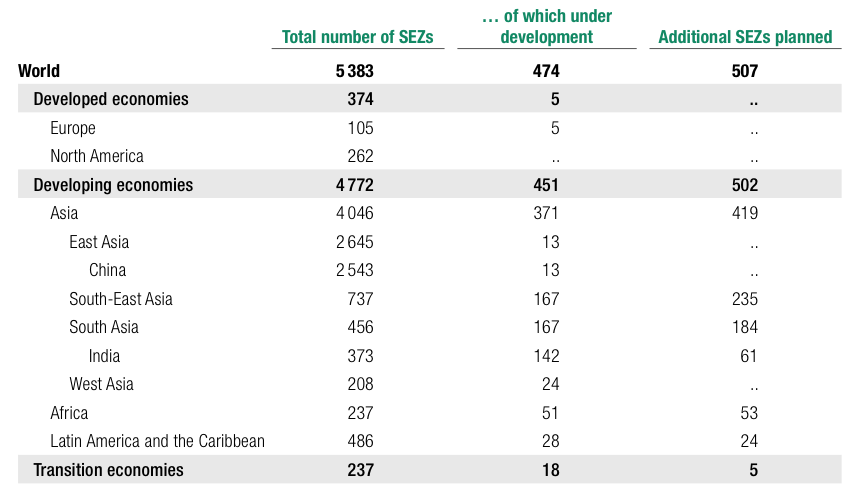
4.4 Growth Drivers
- Incentives: Lower costs, cheap land, government incentives, and political stability are driving the search for manufacturing hubs.
- New Capital: Indonesia’s capital move to Borneo creates a need for SEZs to accommodate domestic and international talent.
- Effectiveness: Post-COVID-19, SEZs are seen as an efficient solution for immediate manufacturing and job creation.
- Funding: Abundant international investment seeks growth in Asia, and Borneo’s central location and large labour pool make it an attractive choice for labour-intensive manufacturing.
4.5 Key Customers:
Top global players in target industries
- Agriculture:
- ADM
- Bayer
- BASF
- Cargill
- CNH Industrial
- DuPont
- John Deere
- Nutrien
- Syngenta
- Yara International
- Cold Storage:
- Americold Logistics
- Agri-Norcold
- AGRO Merchants Group
- Bring Frigo
- Burris Logistics
- Comfrio Soluções Logísticas
- Conestoga Cold Storage
- Confederation Freezers
- Congebec Logistics
- Constellation Cold Logistics
- Frialsa Frigorificos
- Friozem Armazéns Frigoríficos
- Hanson Logistics
- Holt Logistics
- Interstate Warehousing
- Kloosterboer
- Lineage Logistics
- Magnavale
- NewCold Advanced Cold Logistics
- Nichirei Logistics Group
- Superfrio Armazéns Gerais
- Trenton Cold Storage
- United States Cold Storage
- VersaCold Logistics Services
- VX Cold Chain Logistics
- Drones:
- 3D Robotics
- Action Drone USA
- Aerialtronics
- Aeronavics
- AeroVironment
- Autel Robotics
- Delair
- DJI
- Draganfly Innovations
- EHang
- FLIR Systems
- Flyability
- Freefly
- GoPro
- Holy Stone
- Hubsan Drones
- Intel
- Insitu
- Kespry
- Parrot
- Skydio
- Uvify Drones
- Yuneec
- Electronics:
- Hitachi
- Honeywell International
- Hon Hai Precision Industry (Foxconn)
- LG Electronics
- Midea Group
- Mitsubishi Electric
- Pegatron
- Panasonic
- Samsung Electronics
- Sony
- Electric Vehicle (EV) Industry:
- Arcimoto
- Blink Charging
- BYD
- ChargePoint
- Electrameccanica Vehicles
- Envoy Technologies
- Facedrive
- Fisker
- Hyliion
- Kandi Technologies Group
- Li Auto
- Lucid Motors
- NIO
- Rad Power Bikes
- Revel
- SAIC-GM-Wuling
- SAIC Motor
- Steer
- Tesla
- WM Motor
- Workhorse Group
- Xpeng Motors
- Ztractor
- Food:
- ADM
- Anheuser-Busch InBev
- Cargill
- CHS
- Coca-Cola Company
- Danone
- JBS
- Kraft Heinz
- Lactalis
- Mars
- Mondelez International
- PepsiCo
- Nestlé
- Olam International
- Smithfield Foods
- Tyson Foods
- Unilever
- Logistics:
- Americold Logistics
- C.H. Robinson Worldwide
- Deutsche Post DHL Group
- DSV Panalpina
- Expeditors International
- FedEx
- Hyundai Glovis
- J.B. Hunt Transport Services
- Kenco Group
- Kerry Logistics
- Kuehne + Nagel International
- Maersk
- Nippon Express
- Nippon Yusen
- Old Dominion Freight Line
- SF Holding
- Sinotrans
- UPS
- XPO Logistics
- ZTO Express
- Mining:
- Agnico Eagle Mines
- Anglo American
- AngloGold Ashanti
- Barrick Gold Corporation
- BHP (BHP Group)
- CEZ Group
- China Shenhua Energy
- Coal India
- Freeport-McMoRan
- Glencore
- Gold Fields
- Harmony Gold
- Kinross Gold Corporation
- Newmont Goldcorp
- Newcrest Mining
- NIPC (Nigerian Investment Promotion Commission)
- Polymetal International
- Polyus
- Rio Tinto
- Sasol
- Shaanxi Coal and Chemical Industry Group
- Southern Copper Corporation
- Teck Resources
- Oil and Gas:
- BP
- Chevron
- ExxonMobil
- Gazprom
- Marathon Petroleum Corporation
- PetroChina
- Royal Dutch Shell (Shell)
- Saudi Aramco
- Sinopac
- TotalEnergies
- Pharmaceutical:
- 3M
- Abbott Laboratories
- AbbVie
- Amgen
- Astellas Pharma
- AstraZeneca
- Bayer
- Biogen
- Boehringer Ingelheim
- Bristol-Myers Squibb
- Daiichi Sankyo
- Danaher Corporation
- Eli Lilly and Company
- Gilead Sciences
- GlaxoSmithKline
- Johnson & Johnson
- Medtronic
- Merck
- Novartis
- Novo Nordisk
- Otsuka Holdings
- Pfizer
- Roche (F. Hoffmann-La Roche Ltd)
- Sanofi
- Shanghai Pharmaceuticals Holding Co., Ltd.
- Sinopharm Group Co., Ltd.
- Takeda Pharmaceutical Company Limited
- Teva Pharmaceutical Industries Ltd.
- Thermo Fisher Scientific
- Viatris
- Semiconductor:
- Applied Materials
- Broadcom Inc.
- Intel Corporation
- Micron Technology, Inc.
- Nvidia Corporation
- Qualcomm Incorporated
- Samsung Electronics Co., Ltd.
- SK Hynix Inc.
- Taiwan Semiconductor Manufacturing Company Limited (TSMC)
- Texas Instruments Incorporated
- Specialty Chemical:
- 3M
- ADM
- Air Products and Chemicals, Inc.
- AkzoNobel
- Albemarle Corporation
- Altana AG
- Amyris, Inc.
- Arkema Group
- Ashland Global Holdings Inc.
- BASF SE
- Bayer AG
- Buckman Laboratories, Inc.
- Chevron Phillips Chemical Company LP
- Clariant AG
- Daicel Corporation
- Dorf-Ketal Chemicals India Pvt. Ltd.
- Dow Inc.
- Eastman Chemical Company
- Element Solutions Inc.
- Elevance Renewable Sciences, Inc.
4.6 Competition and Industry
Top global special zones for designated business, free trade and economic purpose.
- Ajman Free Zone
- Alabuga Special Economic Zone (SEZ)
- AMATA
- Arvand Free Zone
- Birmingham City Centre Enterprise Zone
- Coyol Free Zone
- Dalian Free Trade Zone
- Daegu-Gyeongbuk Free Economic Zone
- Djibouti International Free Trade Zone
- DMCC (Dubai Multi Commodities Centre)
- First Philippine Industrial Park
- Free Port of Ventspils
- Gomel-Raton Free Economic Zone
- Hamriyah Free Zone
- Hiep Phuoc Industrial Park
- Hsinchu Science Park
- Incheon Free Economic Zone (FEZ)
- Inhdelva Free Trade Zone
- Innopolis Special Economic Zone (SEZ)
- Jebel Ali Free Zone
- Kaliningrad Special Economic Zone (SEZ)
- Katowice Special Economic Zone (SEZ)
- Khalifa Industrial Zone Abu Dhabi
- Kunshan Economic & Technological Development Zone
- Liepaja Special Economic Zone (SEZ)
- Lodz Special Economic Zone (SEZ)
- Long Hau Industrial Park
- Mauritius Freeport
- Navoi Free Economic Zone
- Onne Oil & Gas Free Zone
- Ontustik Special Economic Zone (SEZ)
- Panama Pacifico Special Economic Zone (SEZ)
- Pavlodar Special Economic Zone (SEZ)
- Penang Free Trade Zone (FTZ)
- Phnom Penh Special Economic Zone (SEZ)
- Pomeranian Special Economic Zone (SEZ)
- Ras Al Khaimah Economic Zone
- Santander Free Zone
- Santiago Free Zone Corporation
- Shanghai Lingang Economic Development Group
- Shenzhen Special Economic Zone (SEZ)
- SOHAR Port and Freezone
- St. Petersburg Special Economic Zone (SEZ)
- Subic Bay Freeport Zone
- Suzhou Industrial Park
- Taiwan Export Processing Zone (EPZ)
- Tanger Med Zones
- Tan Thuan Export Processing Zone
- Turkistan Special Economic Zone (SEZ)
- Vietnam-Singapore Industrial Park
- Waigaoqiao Free Trade Zone
- Wałbrzych Special Economic Zone Invest-Park
- West of England Enterprise Zone
- ZEPHYR
- Zona Franca de Bogota
- ZPE Uberaba
Local players
Brunei:
- Special Economic Zone: A 40 square km special economic zone located at the Jerudong waterfront and the Tungku region.
Kalimantan:
- Kariangau Industrial Zone: An industrial zone located in Kalimantan.
- Maloy Batuta Trans Kalimantan: A project or area related to economic development in Kalimantan.
Sabah:
- SEDIA: Sabah Economic Development and Investment Authority, associated with the Sabah Development Corridor.
Sarawak:
- RECORDA: Regional Corridor Development Authority, associated with the Sarawak Corridor of Renewable Energy.
5.0 Operation
5.1 SEZ investment process – Indonesia

5.2 Composition of the stakeholders and their scope of work
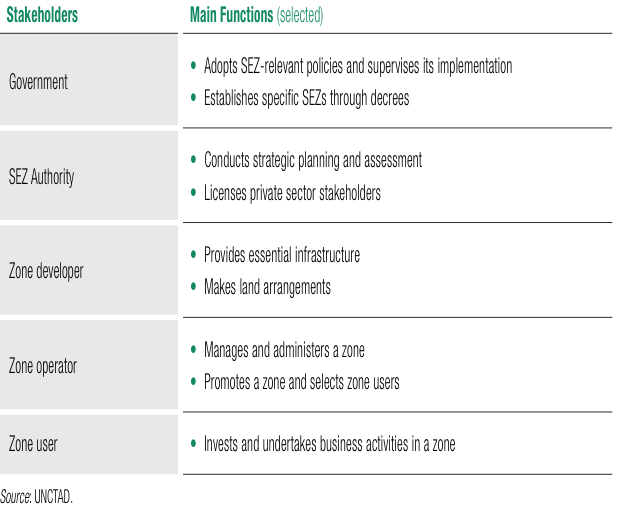
5.3 Development activities by SEZ developer
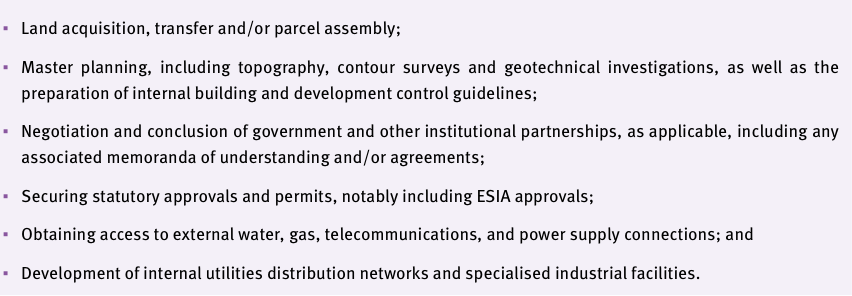
5.4 SEZ operation management activities
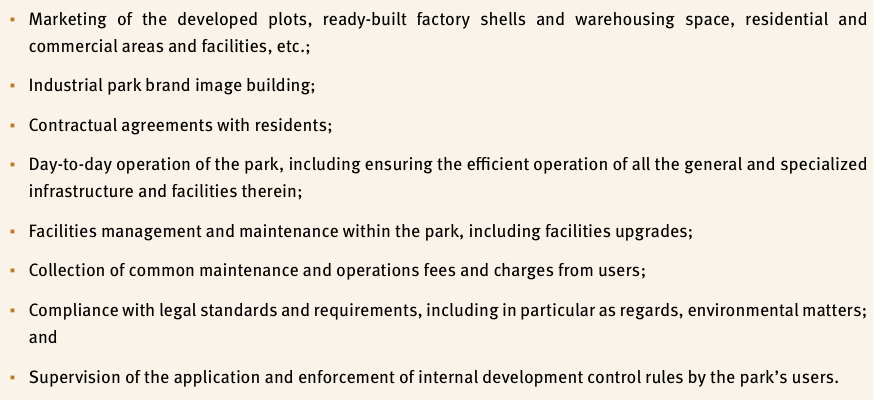
6.0 Financial Implications
6.1 Investment Segment
Special Economic Zone (SEZ)
- US$500,000/hectare X 4,000 hectares = US$2.0 billion/SEZ
- 6 SEZs X US$2.0 billion/SEZ = US$12.0 billion
Breakdown of investment budget in SEZ–Thailand
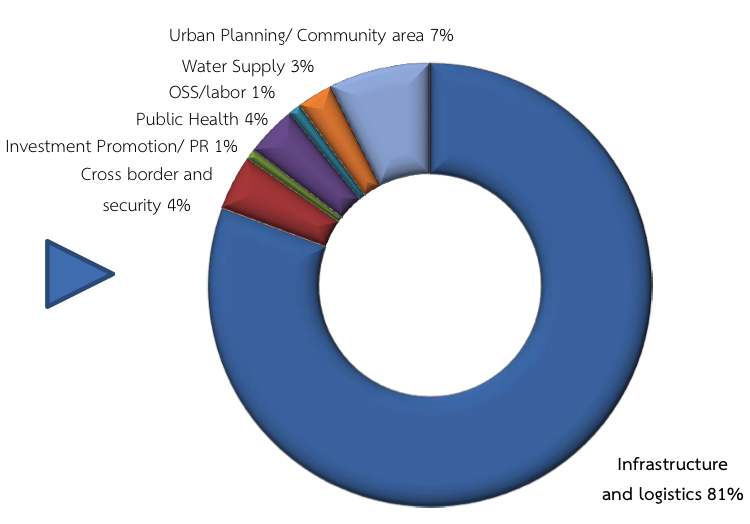
Case studies:
- SEZ Maloy Batuta Trans Kalimantan, East Kalimantan
- Land: 557 hectares
- Investment: US$243 million
- Start: 2019
- Tanah Kuning Industrial Zone, North Kalimantan
- Land: 5,664 hectares
- Investment: US$6.5 billion
- Tanjung Api Api SEZ, South Sumatra
- Land: 2,030 hectares
- Investment: US$4 billion
- Bangladesh – Three Economic Zones
- Investment: US$17 billion
- Djibouti FTZ
- Land: 4,800 hectares
- Investment: US$3.5 billion
- Thailand – 10 SEZs
- Investment: US$23 billion
- Poland SEZ
- Land: 15,829 hectares
- Investment: US$26 billion
6.2 Cost of Production
Projected Developed Land Costs: Estimated at US$50.0 per square meter (m²).
References for Land Costs:
- Batam Industrial Land: Ranges from US$45 to US$87 per m².
- Batam Land & Factory: Approximately US$200 per m².
- Kalimantan Industrial Land: Priced at US$43.6 per m².
- Lahad Datu Industrial Land: Varied rates between US$18 and US$70 per m².
- Sandakan Industrial Land: Varies between US$35 and US$86 per m².
Operating Costs: These include a range of service expenses such as utility fees, power plants, waste management, advertising, marketing, administration, and operational management.
Revenue Generation: Revenue primarily consists of management fees paid by tenants and landowners within the zone.
Sabah electricity tariff
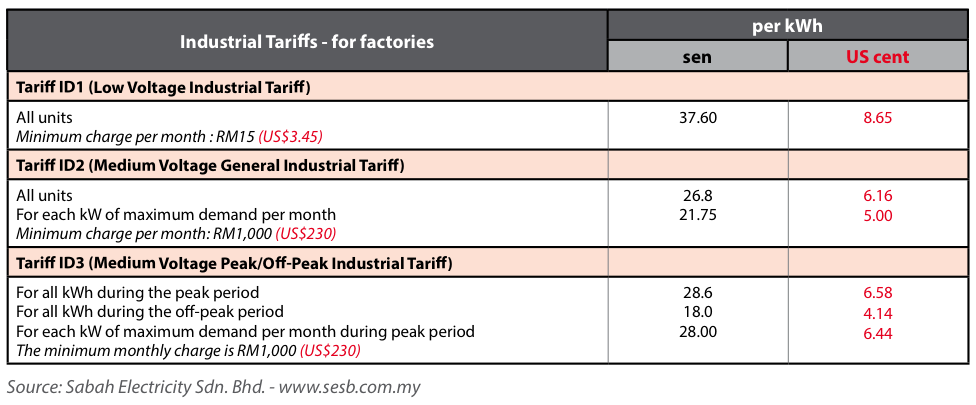
Sabah water rates: per m3 RM US cent
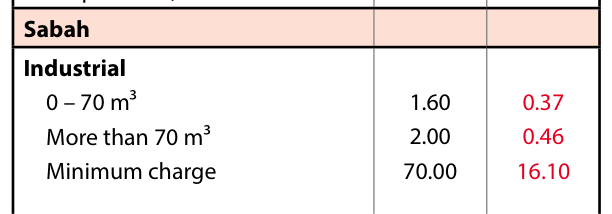
Malaysia
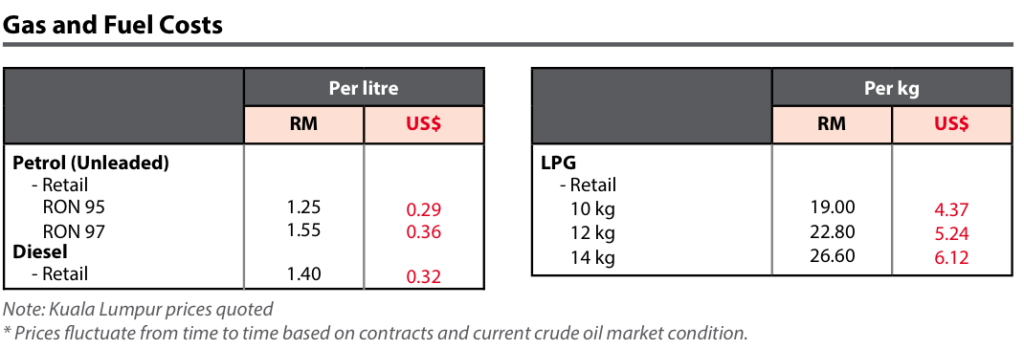
6.3 Price and Revenue
Land sales
- 6 SEZ X 4,000 hectares X 10,000 m2 = 240,000,000 m2
- US$65/m2 X 240,000,000 m2 = US$15.6 billion
6.4 Financial Returns

Case Studies
1. Bintuni Industrial Zone, Indonesia
- Project Cost: US$451.1 million
- Internal Rate of Return (IRR): 10.17%
- Net Present Value (NPV): US$13.20 million
- Concession Period: 23 years
2. ASEAN SEZ Development Programmes
- Expected Return on Investment (ROI): Anticipated to be in the range of 15% to 20%
2019 Financial Income of listed SEZ groups:
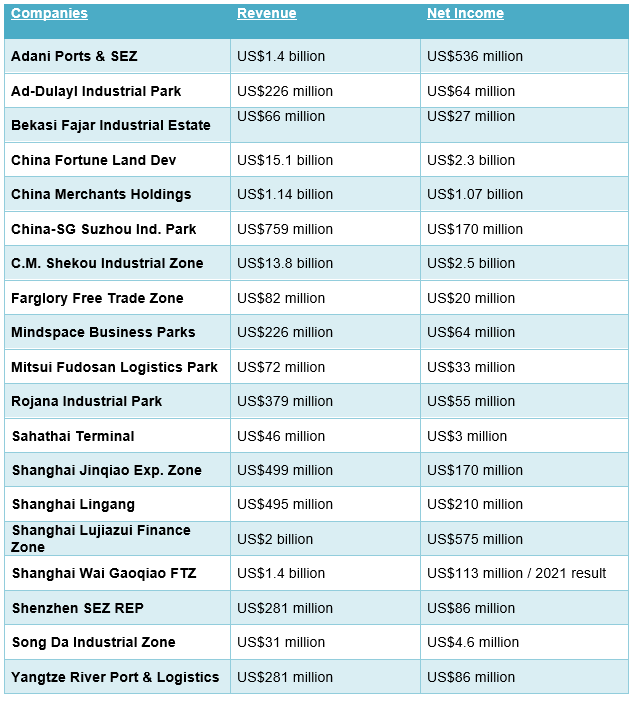
6.5 Source of Funding
1. Strategic Investors
- New Investor: A project leader with a strong focus on business and financial management.
- Financier: SEZ private equity firms and investor groups.
- SEZ Operator: International SEZ developer and operator groups.
- Government: Various government agencies from Borneo Island, including Brunei, Kalimantan, Sabah, and Sarawak, are potential contributors to funding initiatives.
2. Private Equities and Investors:
- Aboitiz InfraCapital
- Afro Asia Trade & Investments
- Allianz
- American Century Investment Management
- Andbank Wealth Management
- Argo Manunggal Land Development
- Asset Management One
- Bain Capital
- Bank of Communications Schroder Fund Management
- Barclays Capital
- BlackRock Fund Advisors
- Blackstone
- Bohai Industrial Investment Fund Management
- Bosera Asset Management
- Brookfield Asset Management
- Camas Investments
- Capital Research & Management
- Charles Schwab Investment Management
- Chiefton
- China Asset Management
- China Development Bank Capital
- China Investment Corp
- China Life Asset Management
- China Merchants Fund Management
- China Southern Asset Management
- China Universal Asset Management
- Cohen & Steers Capital Management
- Daiwa Asset Management
- Danske Bank Investment Management
- DBX Advisors
- DE Shaw
- Dimensional Fund Advisors
- DJE Kapital
- DLF Assets
- DMCC
- DP World
- Duisburger Hafen
- Eastspring Investments
- EII Capital Management
- Emerging India Fund Management
- Eredene Capital
- Everbright Environment
- FIL Investment Management
- Fincorp Investment
- First Philippine Holdings
- Flourishing Trade & Investment
- Franklin Templeton Investment Management
- Gelex Energy
- Geode Capital Management
- GF Fund Management
- GIC
- Goldman Sachs
- Harbin Investment Group
- Harvest Fund Management
- Hillhouse Capital
- HSBC Global Asset Management
- ICBC Credit Suisse Asset Management
- ICICI Venture
- IDFC
- Irish Life Investment Managers
- IZP Group
- JPMorgan Investment Management
- JTC
- KBC Fund Management
- Keppel
- KKR
- KMP Vietnam Investment
- Lazard Asset Management
- Legal & General Investment Management
- Medine Group
- Manulife Investment Management
- Mellon Investments
- Millennium Management
- Mirae Asset Financial Services
- Mitsubishi UFJ Financial Group
- Nikko Asset Management
- Nissay Asset Management
- Nomura Asset Management
- Norges Bank Investment Management
- OxFORD Asset Management
- Ping An Asset Management
- Premia Partners
- Principal Global Investors
- PS Business Parks
- Reliance
- Rosemont Seneca Partners
- Schroder Investment Management
- SembCorp Parks
- Shanghai FTZ Equity Fund
- Shanghai Pudong Investment Holdings
- Shanghai Wealspring Asset Management
- Shinkin Asset Management
- Sinomach
- SPI
- SSgA Funds Management
- Sumitomo Mitsui Trust Asset Management
- Tan Thuan
- Thornton Group
- Tian Hong Asset Management
- Trinity Capital
- UBS Securities
- Value Partners
- Vanguard Group
- Warburg Pincus
- Worldwide Emerging Market Holding
- Xander Group
- Xingfu Investment Management
- Zhong Ou Asset Management
3. Consultants, Development and Fund Managers to the SEZ Industry:
- ADB (Asian Development Bank)
- Adrianople Group
- BCG (Boston Consulting Group)
- China Asean Fund
- China-Eurasia Economic Cooperation Fund
- Deloitte
- E & Y (Ernst & Young)
- FEMOZA
- IFC (International Finance Corporation)
- KPMG
- Locus Economica
- McKinsey
- PWC (PricewaterhouseCoopers)
- Oliver Wyman
- UNCTAD (United Nations Conference on Trade and Development)
- UNIDO (United Nations Industrial Development Organization)
- WAIPA (World Association of Investment Promotion Agencies)
- WEPZA (World Export Processing Zones Association)
- World Bank
- World FZO (World Free Zones Organization)
6.6 Growth Potential: Borneo Island’s Ascent
Borneo Island possesses significant growth potential, drawing inspiration from prominent global economic hubs like the Guangdong–Hong Kong–Macau Greater Bay Area (GD-HK-MO GBA), New York City, Tokyo, and San Francisco Bay. The GD-HK-MO GBA, located in the southern region of China, includes nine cities and two special administrative regions. In 2018, this dynamic region boasted a combined GDP of US$1,642 billion, and it is projected to surge to a staggering US$4 trillion by 2030.
Borneo Island can chart a similar trajectory, capitalizing on its unique attributes and strategic positioning to become a thriving economic powerhouse in the Asia-Pacific region.
7.0 Management Team
7.1 Key Management Team
- Mentors: Visionary pioneers and industry leaders with an extensive global network who provide invaluable guidance and inspiration.
- Coaches: Mission-oriented industry experts offering practical solutions to challenges, ensuring our team remains focused on its objectives.
- Partners:
- A project leadership group boasting a successful track record in SEZ development, operational management, and global marketing exposure.
- A reputable investment manager with access to funding sources within the Asia Pacific SEZ industry.
- Government agencies offering business and financial incentives.
- A credible local industrial park developer with procurement capabilities, a strong local network, sound financial standing, and robust government support.
In the Special Economic Zone (SEZ) industry, several global leaders have made significant contributions, shaping its growth and success. Here is a list of some of these remarkable individuals, honoured for their vision and dedication:
- Professor Jean-Paul Gauthier
- Tony Restall
- Professor Lorenzo Riccardi
- Juan Torrents
- Qin Weizhong
- H.E. Dr Mohammed Al Zarooni
These are just a few of the outstanding professionals and captains of the industry. The readers are encouraged to explore further and conduct their research to learn more about the management teams in this dynamic field.
7.2 Key Management Team Model

8.0 Unique Business Model
8.1 Successful track record
- Shenzhen: Renowned for its success, Shenzhen’s SEZ model offers fiscal incentives, affordable land, and a competitive workforce.
- DMCC: DMCC, consistently awarded “Global Free Zone of the Year,” excels in infrastructure, ESG, and best practices, setting a high standard for SEZs.
Shenzhen SEZ China–before and after
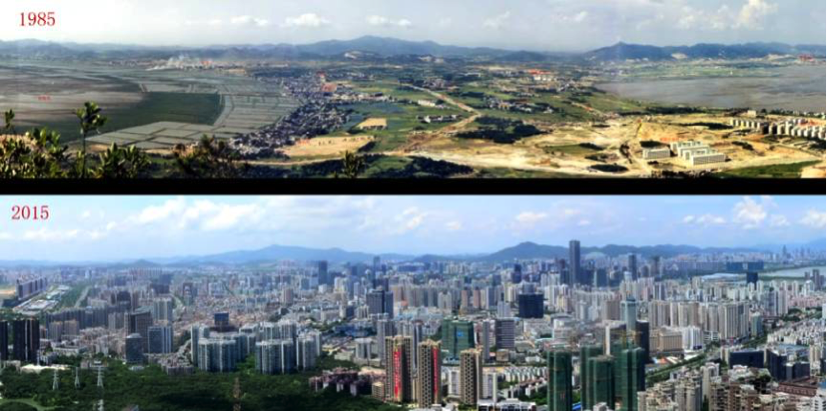
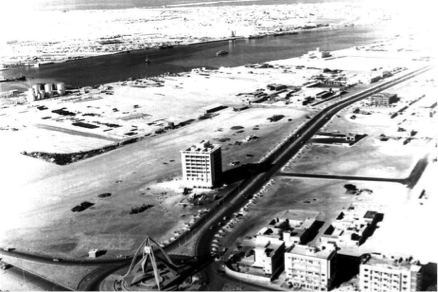
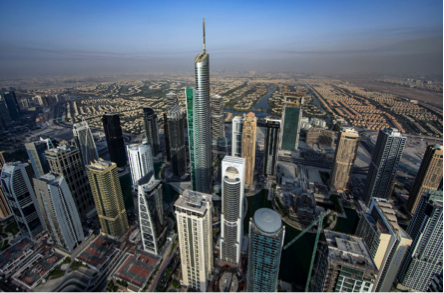
Source: Arabian Business 2011 Source: DMCC 2021
8.2 Entry Model
- PPP (Public-Private Partnership): Establish a PPP entity involving international consortiums, local industrial park developers, and government agencies. Private stakeholders gain access to global expertise in SEZ development while benefiting from a supportive regulatory framework provided by the government.
8.3 Unique Business Model
- Team: Leverage the successful track records of global SEZ groups.
- Resources: Borneo offers abundant, cost-competitive land and a sizable labour force, supported by a government favourable to foreign investment.
- Specialty: Focus on specific segments that showcase the SEZ’s unique attributes.
- Alignment: Strategically align goals with partners contributing expertise in SEZ development, operations, finance, and management.
- Value: Integrate SEZs with hinterland investment to create added value.
- Location: Situate in a central hub within the Asia-Pacific region.
9.0 Key Success Factors & Risk Mitigation
9.1 Key Success Factors
- Team: A top-tier international management team with a proven track record.
- Partners: Establish a unified PPP entity with stakeholders and investors sharing common objectives.
- Finance: Secure funding from reputable financial providers.
- Demand: Forge strategic partnerships with shipping lines to secure target customers.
- KPIs: Maintain a clear mission, offer innovative solutions, select a strategic location, cultivate specialty clusters, and ensure quality management.
Other key success factors examples
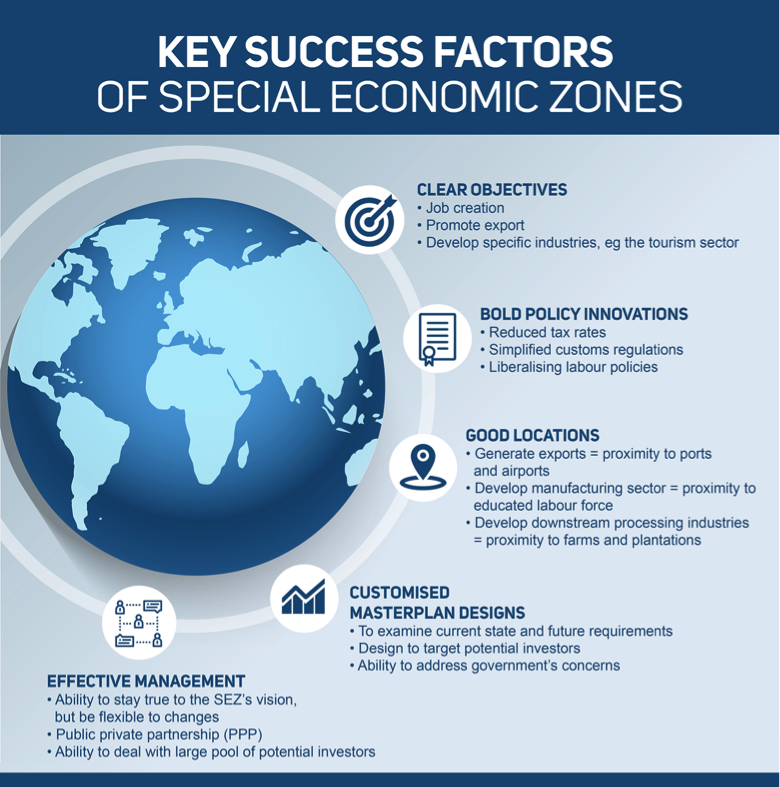
9.2 Risk
- Political: Policy changes impacting the SEZ.
- Support: Insufficient infrastructure within the zones.
- Location: Challenges related to site location, including access to utilities, power, water, labour, and supporting facilities for manufacturing and export processes.
- Barrier: Administrative procedures hindering operations.
- Economy: Economic fluctuations impacting operations.
9.3 Risk Mitigation
- ESG: Implement transparent policies for fiscal incentives and regulations.
- Cost: Reduce exposure to capital investment costs through cost-effective land, duty-free import options, and SEZ laws for investment protection.
- Support: Ensure government-built infrastructure is readily available for SEZ factories.
- Service: Establish a single administrative point of communication and service window to facilitate all supporting services, fostering a business-friendly environment.
- Policies: Establish labour policies, including minimum wage, working hours, conditions, labour inspectors, and conflict resolution platforms.
- Control: Mitigate exposure to economic risk by monitoring sovereign policies, market fluctuations, and conducting timely reviews of credit risk.
10.0 Exit Strategy
10.1 Forms of Exit
- Forms: Exit options include IPO, buy-outs, mergers and acquisitions (M&A), and transfer of assets.
10.2 Key Attractions for New Investors
- Hub: Investment opportunities in new SEZ hubs with specialized industry segments.
- Incentives: Attractive tax and financial incentives for investors.
- Return: Assurance of stable revenues and a competitive return on investment (ROI).
- Location: Strategic positioning in the Asia Pacific region.
- Climate: Benefitting from a tropical environment.
- Ease: Simplified establishment processes, ease of doing business, and plug-and-play operations.
- Cost: Capitalizing on lower costs in emerging markets.
- Growth: Seizing the opportunity for growth within a new business model.